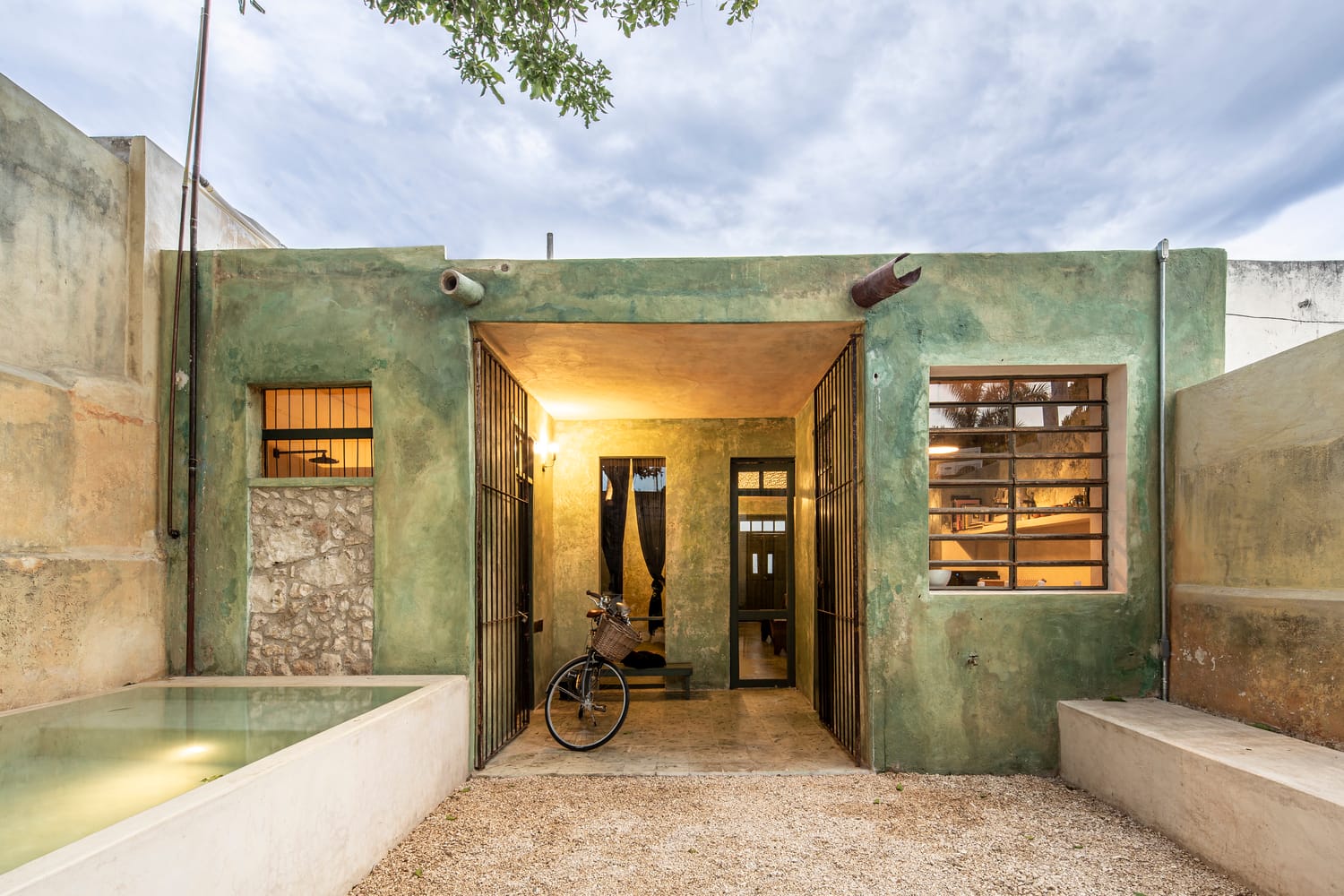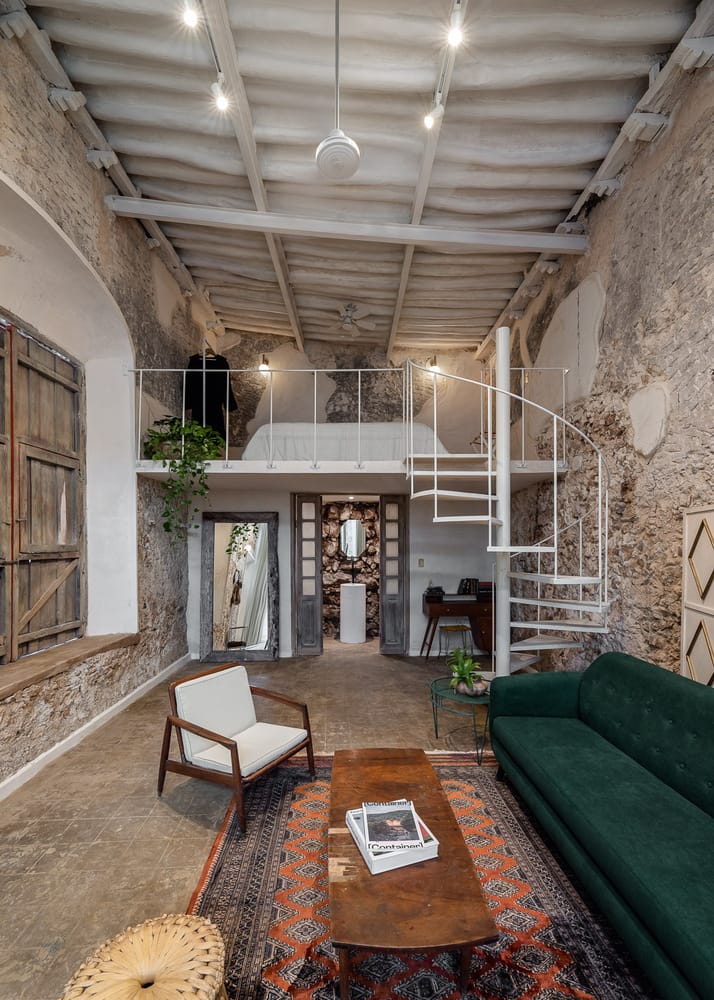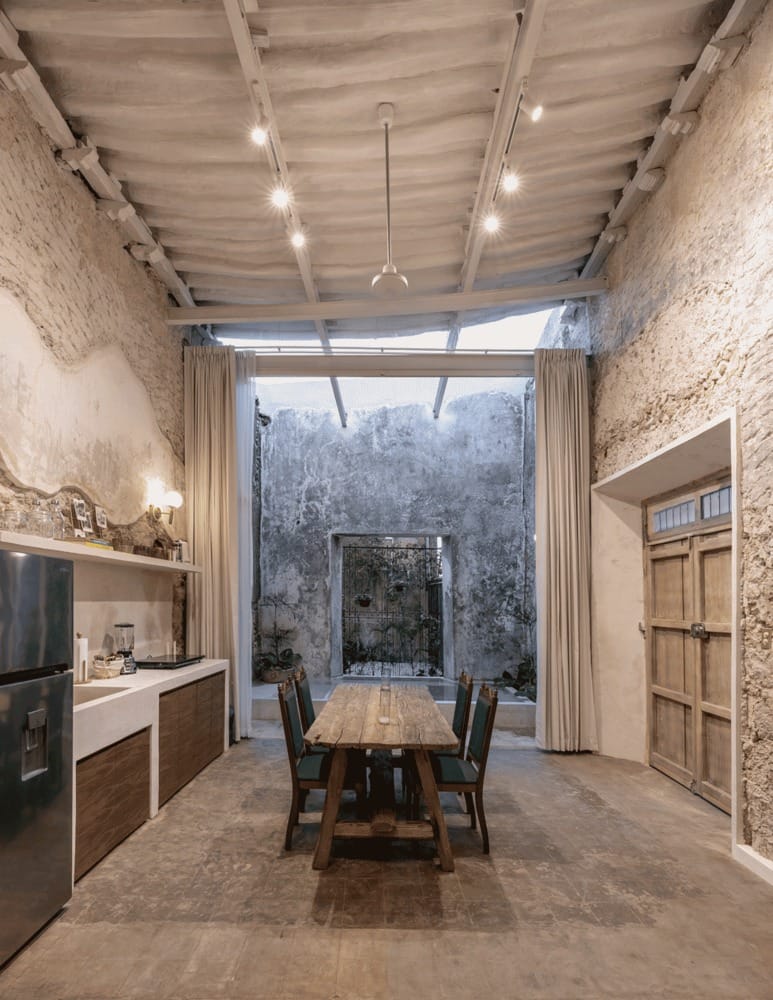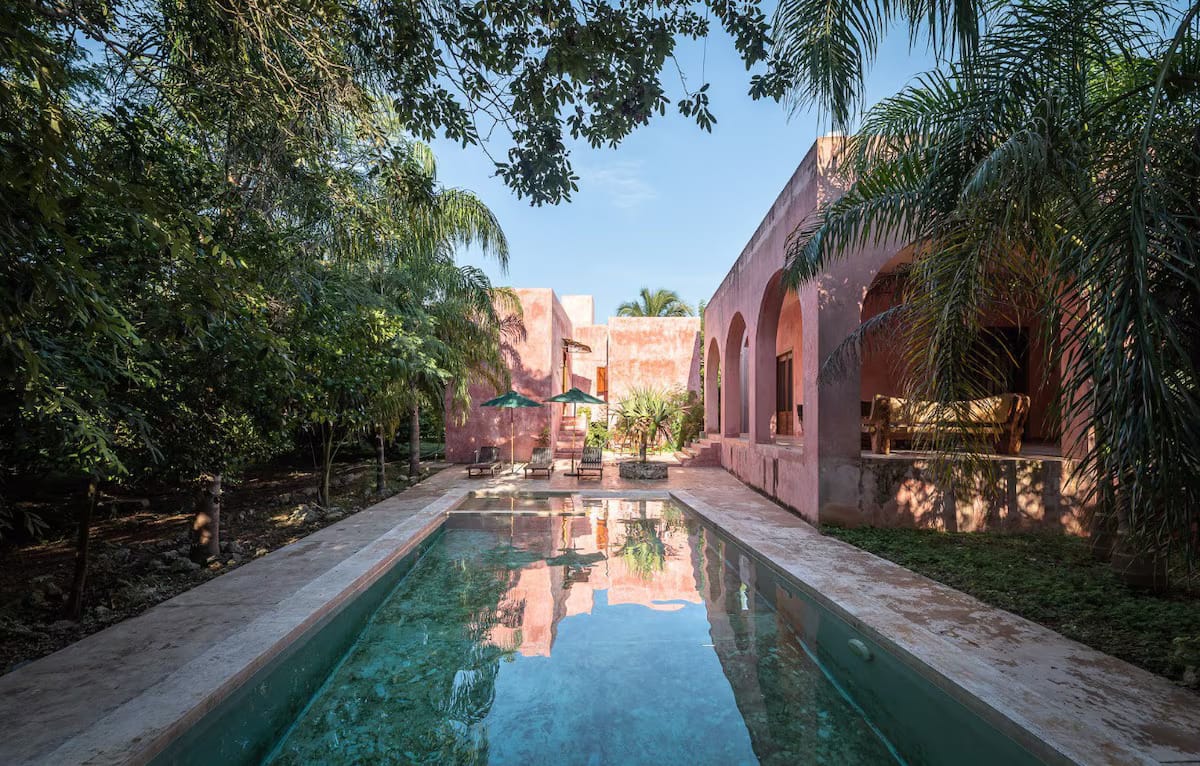The concept of homecoming has special meaning for Gina Gongora, who, along with her partner Fernando Gomez Vivas, co-founded Vagantes—a collection of eight homes as well as its own agency specializing in management, design, and architecture. Located in Mexico’s Yucatan and based out of its cultural epicenter of Merida, these homes invite travelers with a distinctly slow-paced, unhurried charm that transforms them into sanctuaries for local design and escapism.

Founded in 2021, Vagantes is the result of accumulated artistic and travel expertise within a familiar environment. Gina, a multi-generational Yucatan native, takes great pride in highlighting her heritage, its rich design history, and culture through Vagantes. "What you experience here is like true glory," says Gina. But it was their first joint project, Casa Vagantes Montejo, constrained by a personal budget, that birthed a distinctive style that today serves as the common thread among all their subsequent properties.
Gongora’s background does not lie in hospitality but is firmly rooted in aesthetics. After completing her studies in digital design locally, Gongora pursued a fashion course in London. She then embarked on a two-year stint in the digital department at Vogue Mexico in Mexico City. It was during a brief visit to her hometown that she encountered the founders of Coqui Coqui boutique hotels. This sparked a five-year collaboration, during which she returned home and immersed herself in various tasks, from digital media to design and staging. In the meanwhile, Gina nurtured her passion for set design and explored the region's unique landscapes. Gina was already observing the changes in travel patterns and hospitality.
Her path then converged with Fernando, a local architect, and they pooled their skills and passions together. Amidst their local weekend travels, the idea for their collaborative venture began to take shape. Initially, drawing on her journalistic background (while continuing to work as a freelance for Vogue Mexico), Gina envisioned the project to be a blog or some sort of written narrative about exploring the Yucatan. And so, “the name [Vagantes] comes from that," Gina reflects, "from being vagabonds and wanderers, from our insatiable curiosity as discoverers. It's a bit chaotic without a fixed structure, but it's about rediscovering on a whim.”
Together with Fernando, they initially purchased Casa Montejo as their personal residence, only to be so happy with the result that they began renting it. And so, Vagantes was born, emphasizing design prowess over literary pursuits.

Despite facing an initial setback with their venture, which operated for only three months before the pandemic struck, they managed to complete two more projects in their first year thanks to the unique aesthetic proposition. Fernando focused on the architectural and structural aspects of the spaces, while Gina delved into interior design, drawing upon her experience from photo shoots, sets, and staging. When outside clients began to approach Gina about interior design, although not her specialty, she felt confident she could make it work.
“All of our interventions are about letting the houses tell us what to do — not to knock down walls or roofs, but rather to really lean into the spaces that the homes give us,” explains Gina. “Reveal and restore what's behind the walls instead of putting on new paint. In a way, it's reliving a little bit of what it was like to live in centro when our grandparents lived there; it was like super slow living — going to the market and meeting people in the neighborhood. It's still possible.” For instance, this approach led them to uncover the stunning green walls of Casa Montejo, which are now one of the distinguishing elements of their style.
Most of the Vagantes homes, including Casa Montejo, Casa San Sebastian, and Casita Vagantes, date back to the early 1900s — with the colonial-style Casa Ermita being the exception. Gongora brought in mid-century furniture to harmonize with a diverse architectural backdrop, resulting in a cohesive aesthetic born out of attention to detail and thoughtful construction methods. They also took a dive into the history and construction methods specific to Yucatan, uncovering walls crafted by stacking rocks and pebbles without mortar, as well as the use of chukum, a tree resin that creates a washed-out effect and provides natural cooling in the relentless summer heat.


Casa Ermita. Photos by Manolo R. Solis @manolorsolis_fotografia
Inside, the Vagantes properties seamlessly integrate the comforts of home with the styles of the region. Encouraging guests to embrace the essence of local living, their spaces loosely echo the layout of a traditional choza Yucateca-style, including a space to sleep, eat, and simply be. Adorned with luxurious four-poster beds, antique furnishings, artisanal artworks, and locally sourced utilitarian objects, they have now gathered a cult following of conscious travelers.
“We like recycling and giving the houses a new life that makes you feel like you are at home,” elaborates Gongora. “Our aim is for guests to feel utterly at ease, where the accidental spill of coffee doesn't cause concern. It's about instilling a sense of value in every aspect of the space yet also embracing its transient nature. Everything within these walls is meant to be utilized and enjoyed; even if something breaks, it's inconsequential in the grand scheme of things. But what’s important are the little things. We have books you can read, bicycles, hats and bags so that you can take them to the market. My grandfather does this every day and I love to see guests participating in these little things of Yucatecan life.” Guests are greeted with henequen bags, hand-weaved hammocks and more upon their arrival.
As the duo expanded their offerings and established a more structured approach, requests for interior design and architectural services began pouring in from external clients. Their management and design portfolio now boasts eight properties, including their latest addition: Casita Vagantes, a charming mini-house complete with a plunge pool. They've ventured into diverse projects alongside their properties, from crafting a speakeasy at Izamal's Restaurant Kanché to designing their own interior design boutique in Merida’s centro. (They also own a two-bedroom property in the town of Izamal as well, one of their farthest properties from Merida.)
Seeing the rise in group travel across Mexico, they designed their first villa, Casa Kantoyna, 20 minutes outside of the city. Tucked amidst tropical gardens, this pink hacienda-like estate accommodates up to eight guests in luxurious seclusion, complete with a private pool.

With expansion on the horizon, they approach it with a humble spirit. “We have put on the robe of ambassadors of Yucatán,” declares Gina in her Yucatecan accent.
Their focus remains on deepening their research, exploring new territories for inspiration, and gradually and thoughtfully expanding their footprint. Despite interest from clients and locales from across Mexico, they remain committed to their grassroots, startup-like approach, eagerly anticipating what the future holds. "To me, Yucatán is like my anchor. Here, you can feel the energy pulsating through the streets, drawing people in with its rich history and captivating charm," Gina explains.
The Yucatan Peninsula has been steadily unveiling its marvels, captivating with its unique rhythm and the warm hospitality of its locals. Merida's surroundings are a treasure trove, boasting ancient Mayan ruins, historic landmarks, cenotes, untouched beaches, and lush jungles. But for Gongora, it's a return to her roots, driven by familial ties and cherished memories of childhood adventures. She fondly recalls navigating streets devoid of names, where family businesses once thrived—a legacy she proudly continues today with Vagantes.
